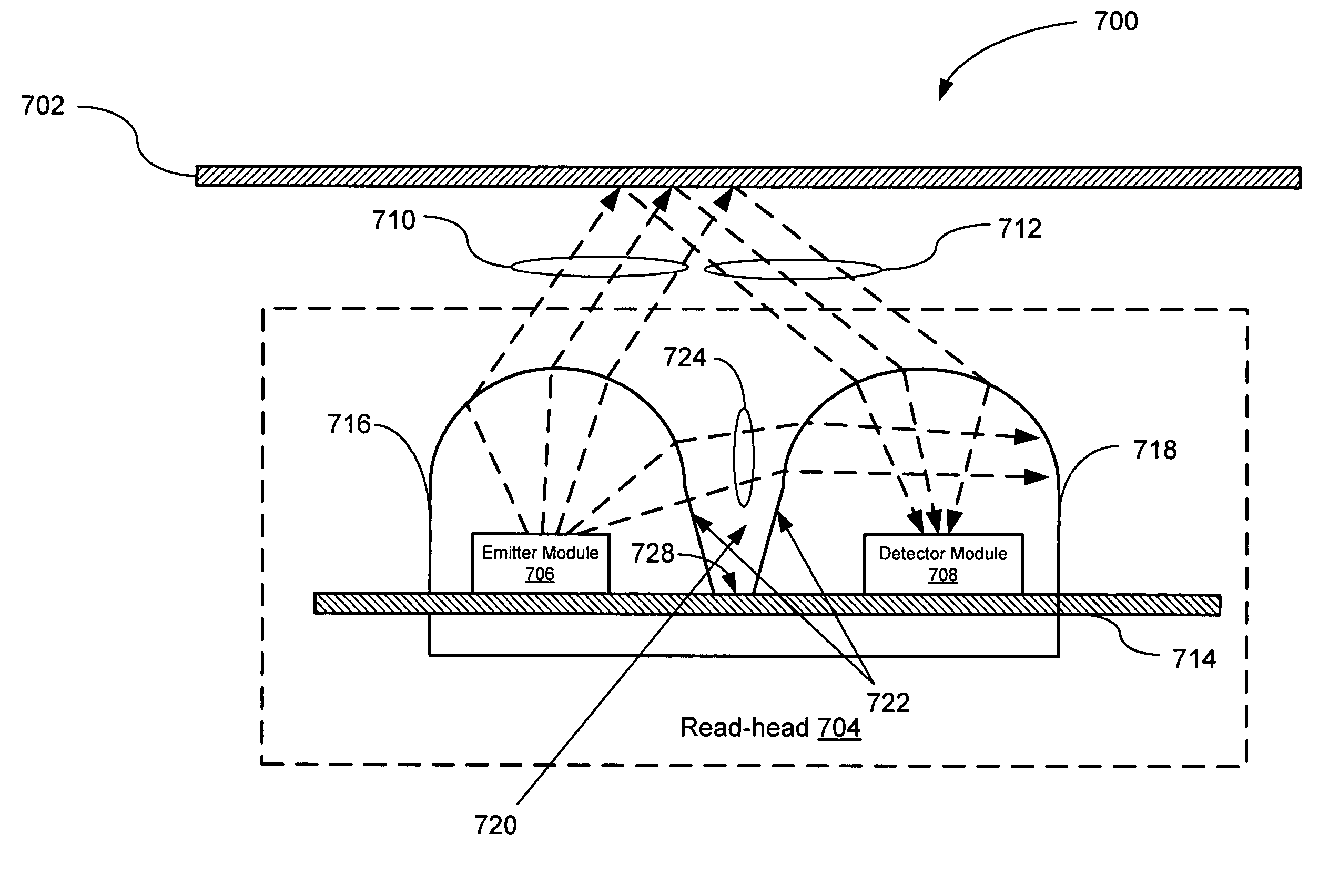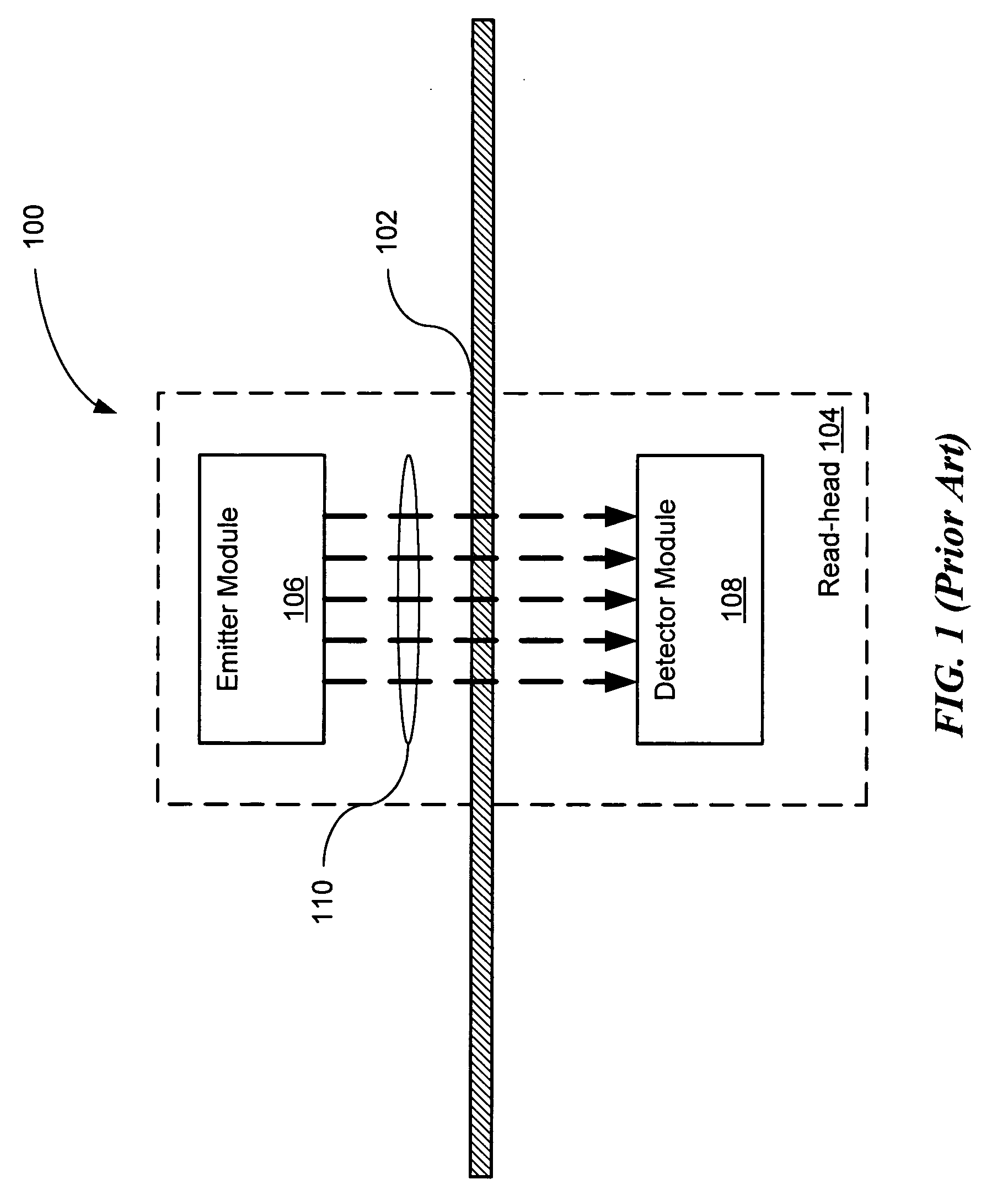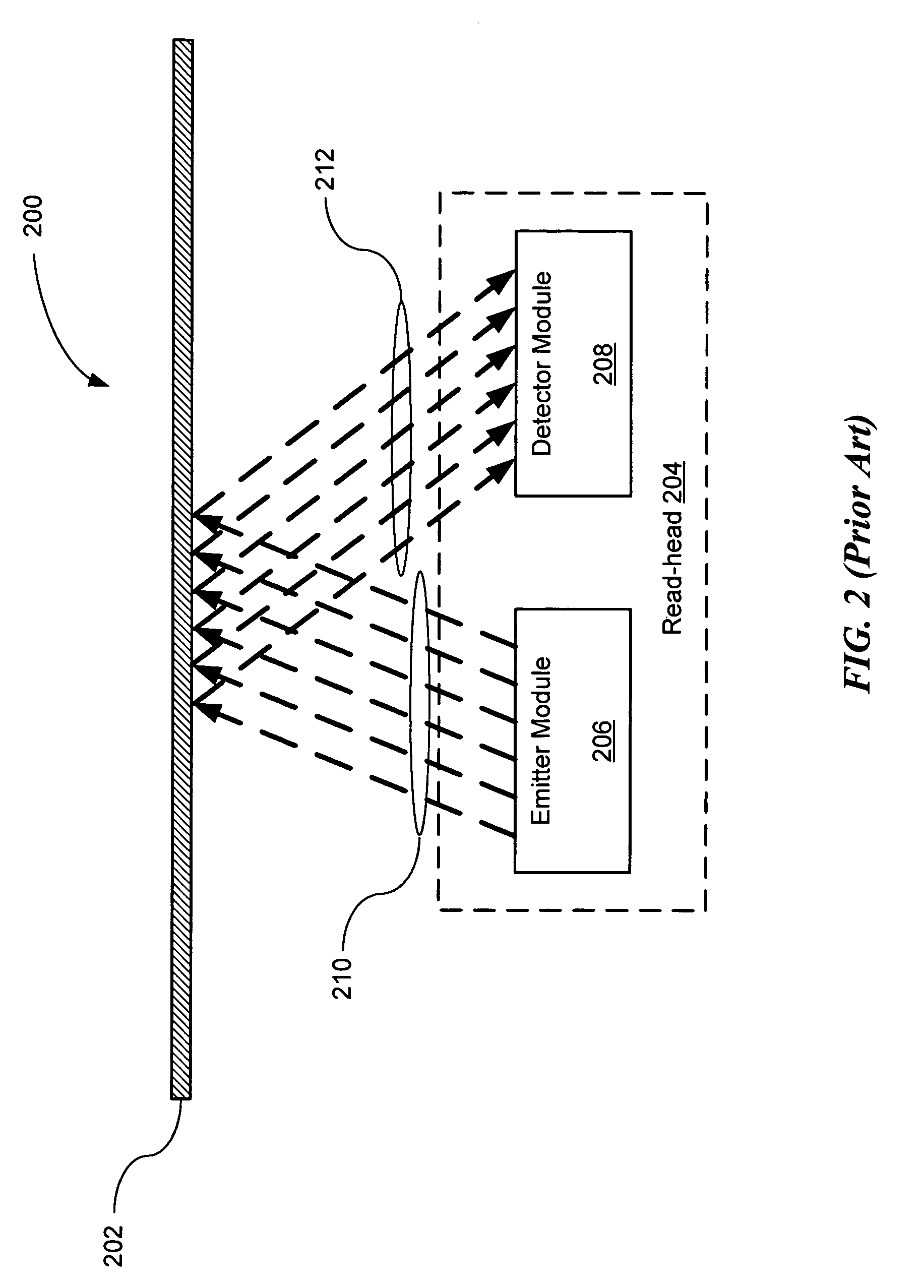Enhanced reflective optical encoder
a reflective optical encoder and reflective technology, applied in the direction of converting sensor output, sensing record carriers, instruments, etc., can solve the problems of limiting the speed and resolution the complexity of the optical encoder, and the packaging design of the transmitting optical encoder
- Summary
- Abstract
- Description
- Claims
- Application Information
AI Technical Summary
Benefits of technology
Problems solved by technology
Method used
Image
Examples
Embodiment Construction
[0043] In the following description, reference is made to the accompanying drawings that form a part hereof, and which show, by way of illustration, a specific embodiment in which the invention may be practiced. Other example of implementation may be utilized and structural changes may be made without departing from the scope of the present invention.
[0044] As stated above, a problem with known types of reflective optical encoders is that undesired optical radiation from the emitter module is propagated through the epoxy to the detector module causing noise in the detector module, which results in loss of image contrast of the light and dark regions (i.e., the “bars”) on the encoded media. This loss in image contrast limits the speed and resolution of typical known reflective optical encoders. In response, an Enhanced Reflective Optical Encoder (“EROE”) is described that is capable of providing higher image contrast and resolution than known reflective optical encoders. The EROE ma...
PUM
 Login to View More
Login to View More Abstract
Description
Claims
Application Information
 Login to View More
Login to View More - R&D
- Intellectual Property
- Life Sciences
- Materials
- Tech Scout
- Unparalleled Data Quality
- Higher Quality Content
- 60% Fewer Hallucinations
Browse by: Latest US Patents, China's latest patents, Technical Efficacy Thesaurus, Application Domain, Technology Topic, Popular Technical Reports.
© 2025 PatSnap. All rights reserved.Legal|Privacy policy|Modern Slavery Act Transparency Statement|Sitemap|About US| Contact US: help@patsnap.com



